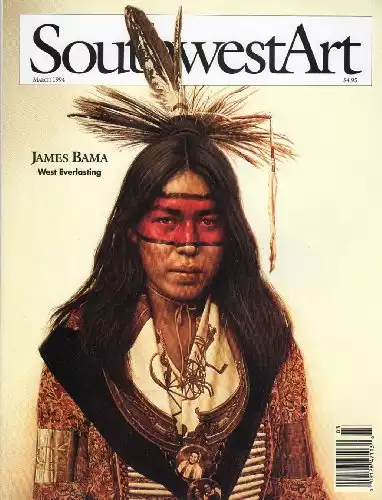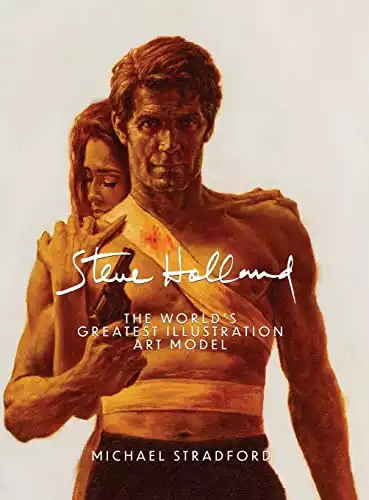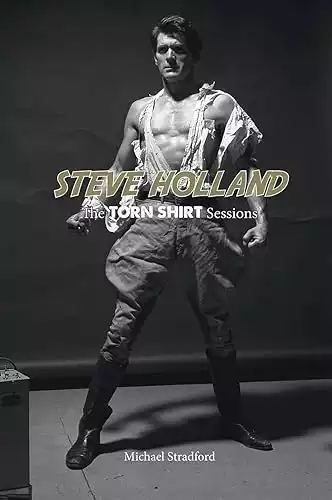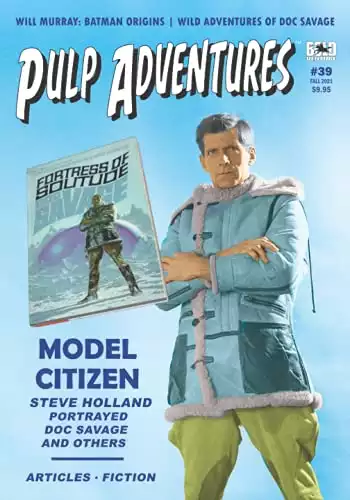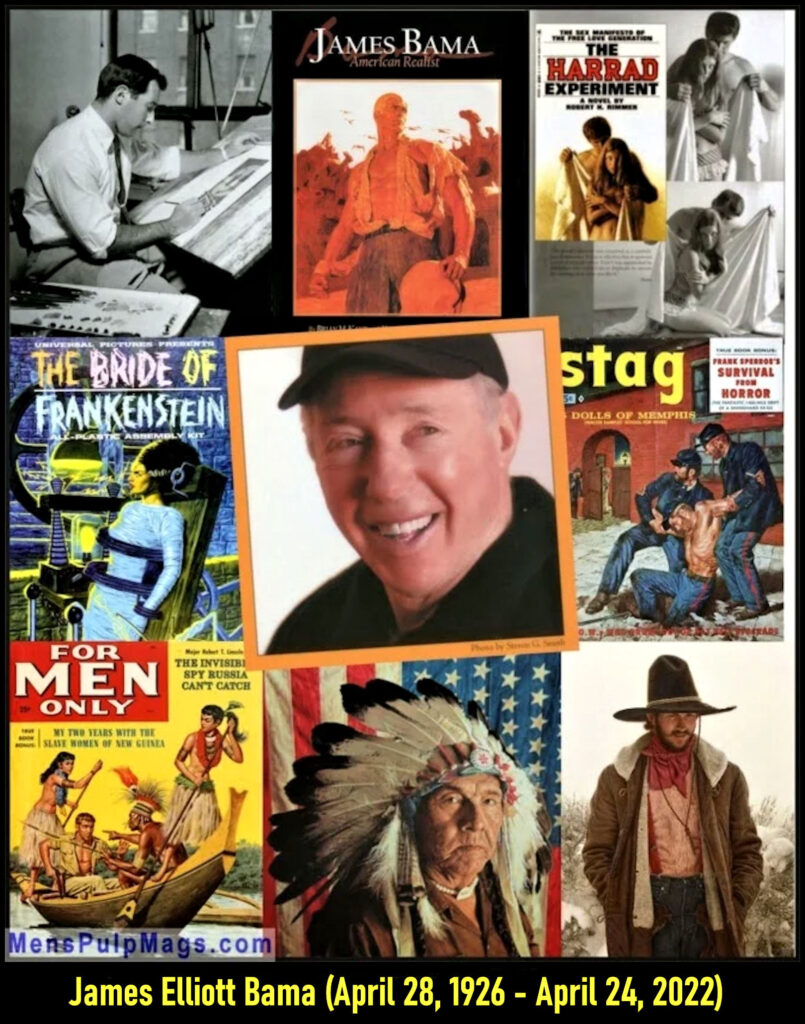
EDITOR’S NOTE: On April 24, 2022, the great artist James Elliott Bama passed away, a few days short of his 96th birthday. During the past decade, I had the honor of talking with Jim by phone several times. In 2014, I did an extensive interview with him for this blog, transcribed in a series of three posts. In honor of his passing, I’m reposting the series again. R.I.P., Jim. Thanks for all the great artwork. Thanks for talking with me…
James Bama is one of the few artists alive today who is legendary for several different types of artwork.
After moving to Wyoming from his home state of New York in 1968, Bama became one of America’s most famous and successful painters of Western art.
His Western paintings are featured in museums and fine art galleries throughout the country and sell for tens of thousands of dollars. High-quality, limited edition prints made from those paintings sell for hundreds.
Their style is painterly and hyper-realistic at the same time. And, they almost palpably convey the character of each of the cowboys, cowgirls, Indians and other Western residents portrayed in them.
It’s no wonder that they have earned Bama a legion of fans and put him in the upper echelons of both Western artists and modern “realist” artists in general.
But Bama continues to have separate cult followings for his earlier work in other areas of art that he made a living from in the 1950s and 1960s: his paperback cover paintings – especially those done for Bantam’s Doc Savage series; his box cover paintings for the Aurora monster model kits; and, his men’s pulp adventure magazine artwork.
All those aspects of Jim Bama’s long career and others are covered in the must-have book about him, JAMES BAMA: AMERICAN REALIST by Brian M. Kane.
If you can afford it, buy the special deluxe of that book.
It includes a DVD with a fascinating and well-produced documentary about Bama’s life and work.
The documentary also features the only on-camera interview I know of with Steve Holland, the great male model who was used by many top illustrators in the 1950s, 1960s and 1970s, including Bama.
Holland’s face and body appears on literally thousands of paperback covers, men’s magazine covers and interior illustrations from those decades.
Bama made him especially famous by using him as the model for Doc Savage, creating an iconic image that is still used today on new Doc Savage books.
Bama also used Holland for the dramatic, trend-setting cover paintings he did for many best-selling mainstream paperbacks, such as THE HARRAD EXPERIMENT, THE NAKED APE and many others.
Most of web pages and sites that feature some kind of artwork by Jim Bama tend to focus on his Aurora art or his paperback covers…
…or his Western paintings.
Bama’s men’s adventure work is less well known, even though it’s also great and helped him develop the skills he later used for his “fine art.”
Of course, men’s pulp adventure mags are my main focus as a collector, writer and editor. So when I contacted Jim at his home in Wyoming and he graciously agreed to do a phone interview, many of my questions were about his work for them. And, most of the artwork I picked to go with my transcript of the interview is men’s adventure art. But we also talked about other aspects of his life and career.
Jim is now 88 years old. He no longer paints. Due to a degenerative eye condition he is virtually blind. But he remains busy dealing with museums, galleries, printmakers, book publishers, reporters and fans. And, his mind is still razor sharp. He is also amazingly affable and cheery. It was a wonderful experience to talk with him and I learned some details about his life and art that I had not read anywhere.
Here’s how our conversation went…
MensPulpMags.com editor Bob Deis: Thanks for talking with me, Jim. I am a huge fan of all of your work, and I especially love your work for the men’s adventure magazines that I write about on my blog and in books.
Jim Bama: It’s funny that you called about those today. A lady from the Whitney Western Art Museum was here this morning to talk to me about my photographs. There’s a show of some of the photos I took for my Western paintings at the Buffalo Bill Center of the West in Cody [Wyoming] this month and she’s giving a talk about them. I’ve always taken my own photos. I’ve taken about 55,000 since the 1950s. Anyway, for some reason or other, a few weeks ago I pulled out a file I have on my men’s adventure career. I have about 25 color reproductions of covers I did for the Magazine Management magazines, and I showed them to her this morning. She was so interested she took about ten of them with her, and she’s going to show them when she gives the talk on my photographs. Now, you’re calling me about them. How small a world can that be?
Here’s another coincidence for you. I recently reread the AMERICAN REALIST book and it reminded me that Harlan Ellison had written the introduction. Back in the day, Harlan wrote a few stories for men’s adventure magazines and he gave me permission to reprint a couple of them them. One is included in one of the books I co-edited.
Bama: What a character Harlan is. He had this TV show “Sci Fi Buzz” and he’s a big fan of mine. He did a five-minute segment on me, which he sent me a tape of. I’ve never met him in person, but he wrote the most flattering letter to me. And he wrote a very flattering introduction to the AMERICAN REALIST book. He said my artwork is magnificent. He’s quite a character.
He certainly is and he’s totally right about your artwork.
Bama: Well, thank you. I don’t know if you know this, but I when I left New York in 1968 to move to Wyoming, the place I was using to take photographs at that time had a huge corrugated garbage bin and I threw away all my men’s adventure magazine paintings. I think I may have one left out of hundreds. But someone must have picked them out of the garbage bin because some of them have appeared on the secondary market since then.
Oh, my God!!! Artists Bruce Minney and Gil Cohen told me similar stories when I interviewed them. They were moving and didn’t want to cart a couple of hundred paintings on illustration board along with them, so they just threw out or sold them cheap.
Bama: We were moving from a four-room apartment house in mid-Manhattan to a cabin out in Wyoming, and I didn’t have room for all that stuff. We moved out there with a pickup truck and a camper. I put all my furniture in storage in New York, and I just threw out my men’s adventure paintings. I didn’t think they’d have any significance at that time. But, you know, I wish I had kept them now. What do they sell for?
It varies with the artist, but in the hundreds for interior paintings and in the thousands for cover paintings. I’m looking on the Heritage Auctions website right now and I see one men’s adventure cover painting you did that sold in 2009 for $3,300 and an interior illustration by you that sold for over a thousand that same year.
Bama: There was one I did of a Marine sergeant with these native gals that I remember seeing had sold for sixty-five hundred. I stopped doing the men’s adventure things in the mid-1960s. I started in 1956, Bob, and around the same time I also started doing paperbacks. By sheer coincidence, I was at a party in New York and a lot of the art directors from the paperbacks were there. So was my friend Mort Kunstler. He was doing work for men’s adventure magazines, too, and was already big in paperbacks then. And, Mort said to Len Leone, who was the Art Director at Bantam Books, “You ought to use Jim.”
And, he did.
Yes, Len and I decided to meet and I went up there and we started a long relationship. I eventually did a couple hundred paperback covers for Bantam and then other book companies wanted me, And, the paperback covers paid more, so I eased out of doing the men’s adventure illustrations. But I did them for years. I used to stay up on weeknights and every weekend, Bob, and I’d do those and paperback covers.
To me, it’s mind-boggling that you were also still working for Cooper Studios during the daytime doing artwork for advertising clients. You sure had a lot of energy.
Bama: Yes, I did. I was hired to do advertising art by Cooper Studios right out of art school and I was still doing that. But they let their artists do magazine and book art, too. So, on weekends, I would watch SEA HUNT, HAVE GUN WILL TRAVEL, GUN SMOKE, THE LATE SHOW and THE LATE LATE SHOW and do men’s adventure paintings. I worked until 3:00 or 4:00 in the morning Friday, Saturday, and Sunday night to do those things. And do you know what I got paid for them?
Well, based on what other artists have told me, I’d guess a few hundred dollars.
Bama: Yeah, $300 for the inside and $400 for the covers. For all the work I put in.
Of course, when you account for in inflation, $300 to $400 was a bit more than it sounds like in today’s dollars. Hard-working artists like you and Mort Kunstler, who did illustrations for magazines and paperbacks on a regular basis could earn a pretty good living.
Bama: True, you’re going up like 10 times. I bought a new convertible in 1956 for $3,000, a Chevy convertible. Now, it would cost over $30,000. I was single and I lived like a king on $20,000 a year. I lived in an apartment house with a doorman. I had a convertible. I had a garage, I traveled, I had an annuity, all on $20,000 a year. Now, I don’t know if we’d last two months. Anyway, I did a men’s adventure illustration almost every week for about eight years. And, I learned a lot from doing them. Each one gave me a different challenge in terms of compositional problems and some required a lot of research. I did those and paperback covers and my advertising artwork every week. How old are you, Bob?
I’m 64.
Bama: I’m 88 now. I can’t believe it. I feel great. I work out all the time. I’m healthy and my mind is good. I have such a good memory. But now I’m legally blind. This month, my wife Lynne and I have known each other for 51 years, we’ve been married for 49.
I read in the AMERICAN REALIST book that she modeled for a lot of your famous paperback covers, such as the cover of John Leo Herlihy’s novel MIDNIGHT COWBOY.
Bama: That’s true.
Did she model for any of your men’s adventure magazine artwork?
Bama: No. But I used a lot of my artist friends who worked at Cooper Studios. I used Mort Kunstler for some. And, I used myself. You know, I read a magazine article about Martin Goodman, the publisher of the men’s adventure magazines I worked for, like MEN, MALE, FOR MEN ONLY and STAG. I found out from the article that he also put out romance and Hollywood magazines, too. The article said the men’s adventure magazines outsold all of those. They would sell like a million copies each month and Mr. Goodman made millions of dollars and we artists did them for a pittance. I found that out a couple of years ago.
Goodman was a definitely a publishing genius. And of course, he also founded Timely Comics, which became Marvel.
Bama: Yeah, he made a lot of money. I remember meeting him. He had white hair. He seemed like a nice man to me. And, the editor Bruce Jay Friedman, who became a well-known writer, he’s a very nice guy.
Yes, he is. He let us reprint a couple of his stories in our first anthology of men’s adventure stories and wrote an introduction for our second book, which collects stories written by a guy named Walter Kaylin. Walter worked at Goodman’s Magazine Management company when Bruce Friedman and Mario Puzo were there.
Bama: I don’t remember meeting Puzo. But I knew he was there and I know later became famous for writing THE GODFATHER. I do have great memories of the Art Directors there, Mel Blum and Larry Graber. Mel was the Art Director before Larry. Larry is still alive and he and I still talk. We talked a few weeks ago. He’s 91 now. He just had two hip replacements. Mel and I were good friends, too. We were both weight lifters. In fact, he was a professional strong man. He used to put on shows, and we became good friends. And I remember we double-dated and we went to Palisades Park in New Jersey and they have this thing where you hit something with the big hammer and the gong goes off. As strong as he was, he couldn’t do it. He was so muscle-bound. We were good friends.
I’ve read that Mel Blum was partially deaf.
Bama: Oh, yeah. When he didn’t want to listen to you, he turned his hearing aide off. Yeah, we were good friends and had a very good working relationship. I don’t think he ever gave me a correction on anything. I stopped doing the men’s adventure art before I stopped doing paperback covers, because the paperbacks paid better and were really taking off at that time. Bantam was the best company. I started working for them and did hundreds, including Doc Savage. They’re still using my Doc Savages. Anthony Tollin [at Sanctum Books] is putting out new editions of all the old Doc Savage stories from the ‘30s and ‘40s and they’re using my Doc Savage covers. And, Brian Kane did an interview with me that’s in one of them. [Vol. #18, THE MONSTERS and THE WHISKER OF HERCULES]. So, I’m still involved in that world. And, there’s still a big following for my Aurora monster kit artwork, which I quit in 1965. I did the first 22 Monster Kits and I finally quit. They started having Frankenstein, Dracula, the Mummy, and the Wolfman riding hotrod cars, drinking blood from cocktail girls, driving through cemeteries. It got to be too much. The art director used to leave the assignments in my office when I was out to lunch because he knew I didn’t want to do them anymore. But at first it was fun and they sold a million copies of each model. You know for $300, Bob, I was a well-paid slave. I wanted to be an illustrator since I can remember and I never was interested in money, and I just did them. I was always busy and I happen to have done a few things that are still popular. I can’t escape tem. I tell my wife the monsters and Doc Savage are going to outlive me.
Well, there are also some big fans of your men’s adventure magazine artwork, like me.
Bama: Oh, really?
Oh, yeah.
Bama: When did those magazines fold, Bob? I quit a couple of years before I moved to Wyoming.
Well, their heyday was really from the mid-1950s to the late-1960s, when you worked for them. Some men’s adventure magazines kept hanging on until the late ‘70s. Some turned into complete porn mags. By the ‘80s the whole genre had basically disappeared.
Bama: Yeah, even the biggest ones, like ARGOSY and TRUE, both of which I worked for, they’re gone. Everything is gone, even the SATURDAY EVENING POST, which I also worked for, they’re all gone.
I know you did some great artwork for ARGOSY and TRUE. But most of your men’s adventure work was for the Magazine Management magazines, right?
Bama: Yes, STAG, MALE, MEN, FOR MEN ONLY…
Your artwork also shows up in other Magazine Management mags like ACTION FOR MEN, MAN’S WORLD and TRUE ACTION.
Bama: And, KEN FOR MEN. I remember KEN. I’ve still got a copy of that. It was a long time ago, a long time ago. But I have a very good memory and I remember everything.
Can I ask you some questions about the chronology of things?
Bama: Sure.
I’ve read that you served in the Army Air Corps. Did you see action in World War Two.
Bama: No, I was stationed Georgia, Mississippi, and Alabama. I was in high school when the war started. In 1943, I thought I’d try and become an officer in the Air Corps, and it took a year-and-a-half to qualify. So, I enlisted in high school four months before I turned 18. By the time I got in, five weeks after I turned 18, the war in Europe had ended. And they sent me from Fort Dix, New Jersey down to Mississippi in the middle of June for basic training. I never perspired so much in my life. All you do is drink liquid and go to the bathroom. You know I’d never been away from home and it was hard work. I was a good athlete, but I was a skinny kid. I weighed about 130 pounds.
Well, I’d say your ability to paint anything well is apparent in the battle scenes you did for men’s adventure magazines. They’re amazingly realistic. What did you do in the places where you were stationed?
Bama: I took basic training in Mississippi, and then they sent me to Moultrie, Georgia, to the Spence Air Base in Moultrie, which was in the eastern flying training command. They made me a mechanic. They put me in charge of six airplanes and we would service them and gas them up. I also painted a mural there because they found out I was an artist. There was a mural that wasn’t completed in the Enlisted Man’s building, and the guy who started it had been sent overseas. So, I finished it. And, then they sent me to Tifton Airfield near Spence Field. The guys that graduated from Spence Field and got their wings, they sent them to Tifton to fly Curtiss P-40’s or to work on them. Then the war with Japan ended and I got out. I was 19 years old.
So that was 1946, right?
Bama: Yes, I got out in November 9, 1946. I remember the date. I went in June 13, 1945 and I got out November 9, 1946. My father died when I was 14 and my mother had her third stroke and died while I was in the service. I got out of the service and I didn’t have any money. I moved in with my two aunts and my uncle. My brother had moved in with them already. All I had was a folding cot, a corrugated clothing closet, and my uncle built me a wooden box for my art supplies. Life was so much simpler then.
It was around that time when you went to study art at the Art Students League in New York?
Bama: Yes, I went to the Art Students League, and I got the most incredible training you could ever get with Frank J. Reilly, who was a disciple of Dean Cornwell. I got great training for 32 months. Then and I got out of art school when I was 22 and I was off and running. By the time I was 24, I got into Cooper Studios, which was the best advertising studio in the country and doing big time stuff for companies like Coke, Ford and General Electric.
AN UPDATE with new info from Brian M. Kane, author of the must-have book JAMES BAMA: AMERICAN REALIST…
In April 2021, there was a discussion among members of the Men’s Adventure Magazines & Books Facebook Group about the female model Bama posed with Steve Holland in the reference photo he used for his famed THE HARRAD EXPERIMENT cover painting.
When I talked with Jim for this interview back in 2014, he misremembered the female model being Andrea Dromm. In fact, Brian Kane, said Bama used his wife Lynne Bama in the reference photo for THE HARRAD EXPERIMENT. Jim and Lynne were married in 1964. Brian said she modeled for many of Jim’s paperback cover paintings and was also the model for the Witch in his box cover art for that Aurora model kit.
Brian noted that Dromm only posed for two of Bama’s paperback cover paintings. She was the model for his cover painting for the 1967 Bantam edition of THE HELLER by William E. Henning. (In his cover art for the 1970 Bantam edition of THE HELLER, Jim used his wife Lynne as the model.) The other cover painting Bama used Dromm for was the 1965 Bantam edition of TOMBOY by Hal Ellson.
– END OF PART 1 –
Here are links to PART 2 and PART 3 of my interview with the great James Bama…
* * * * *
Comments? Corrections? Questions? You can click the CONTACT tab and email them to me,
or join the Men’s Adventure Magazines & Books Facebook Group and post them there.


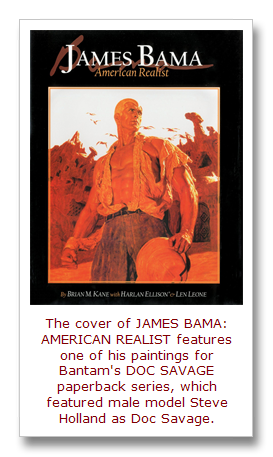
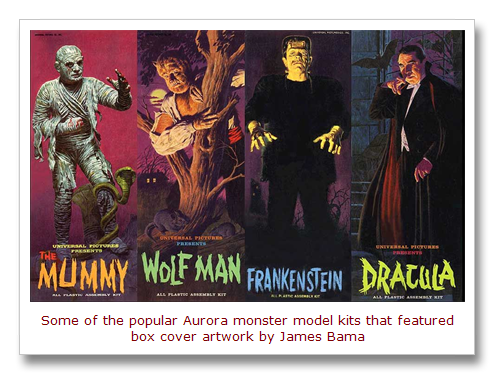
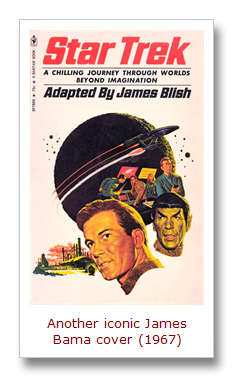
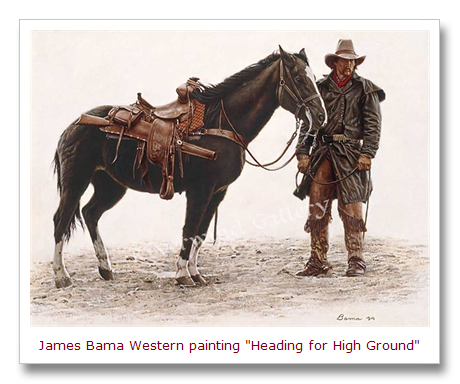
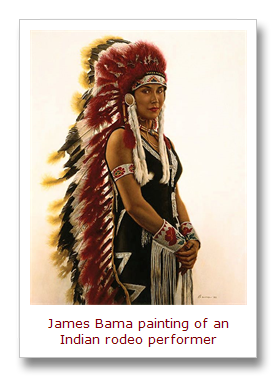
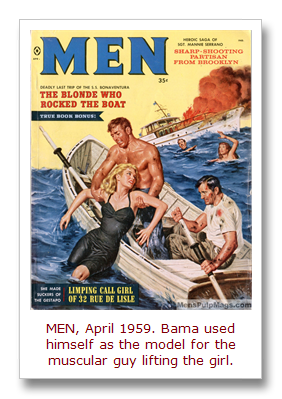
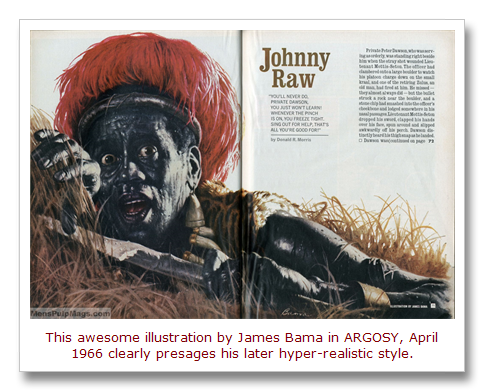
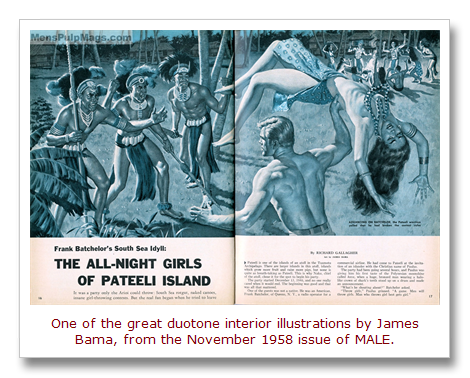
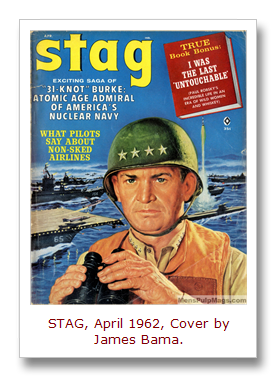
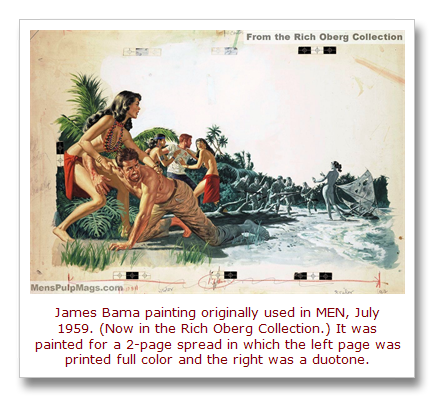
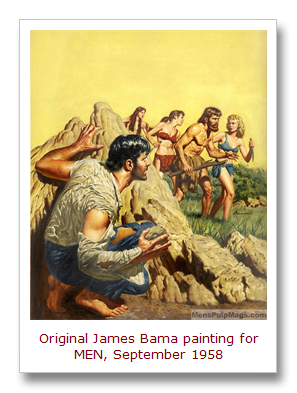
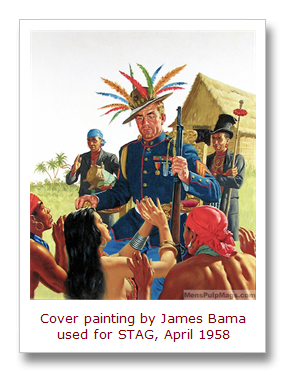
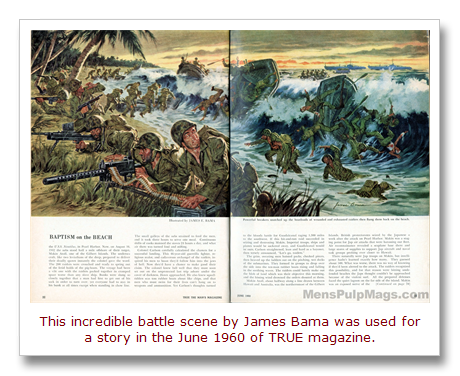
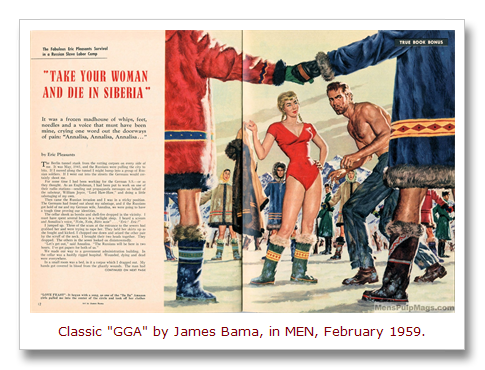
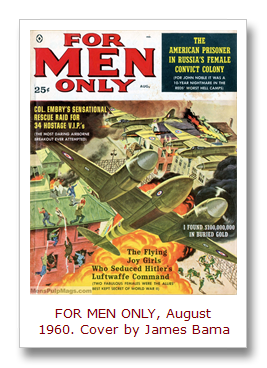
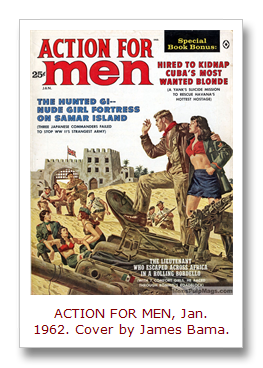
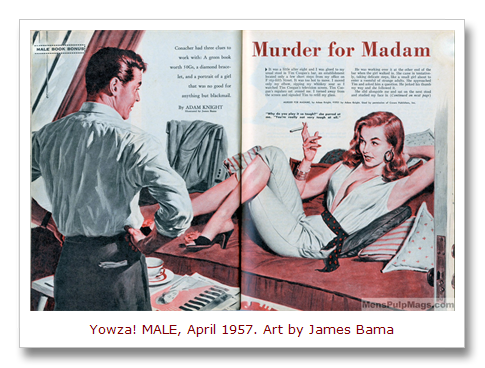
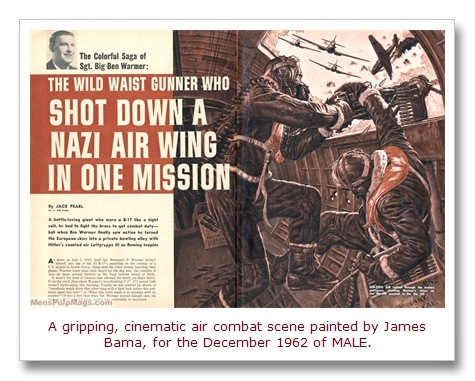
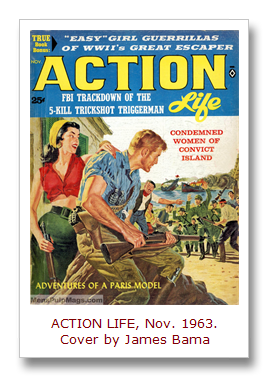
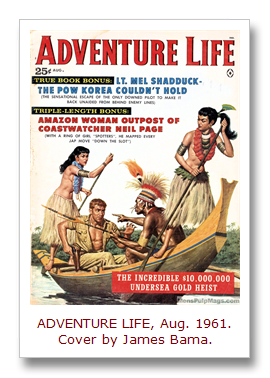
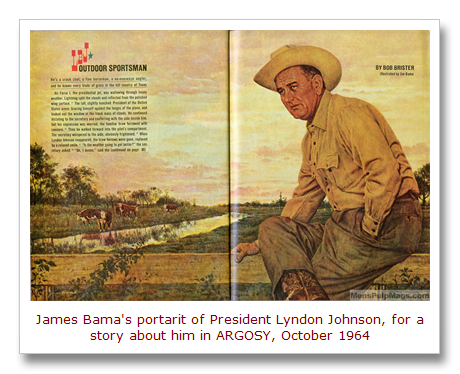
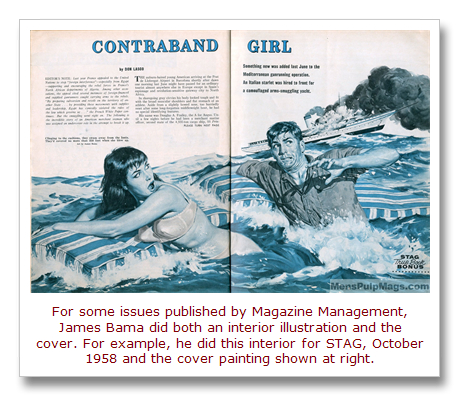
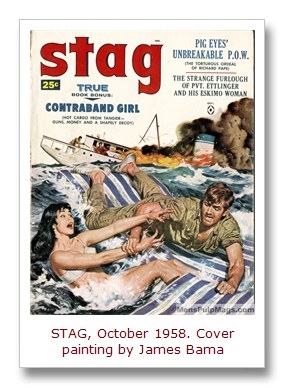
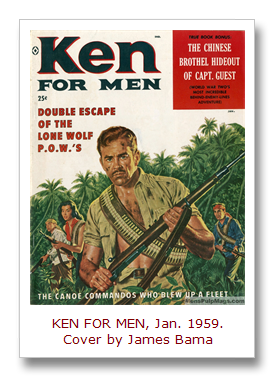
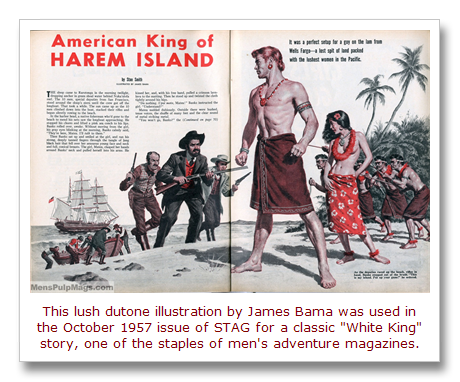
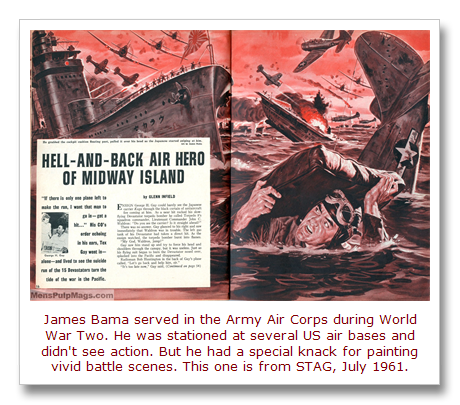
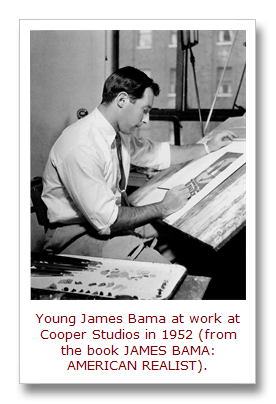
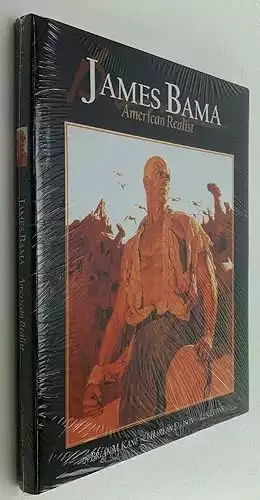
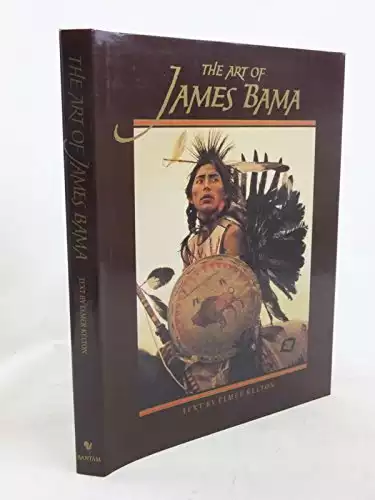
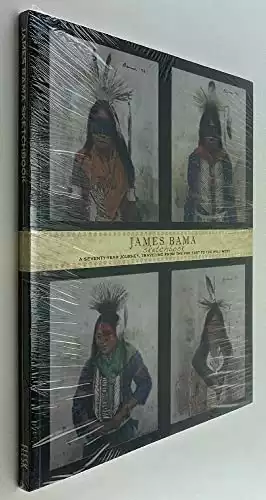
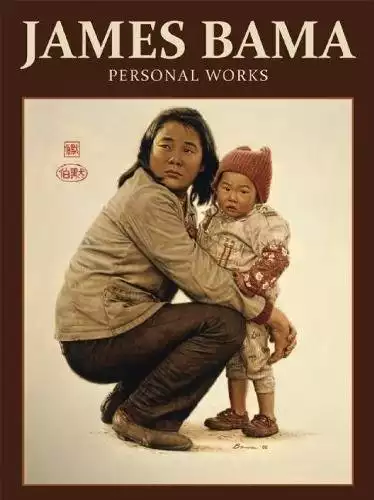
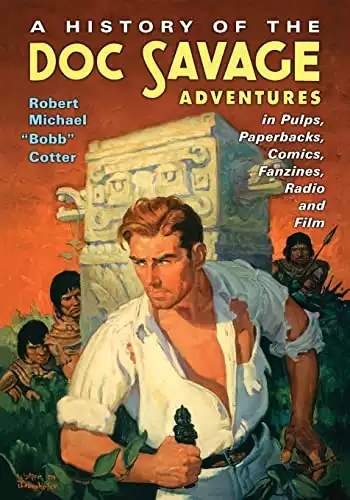
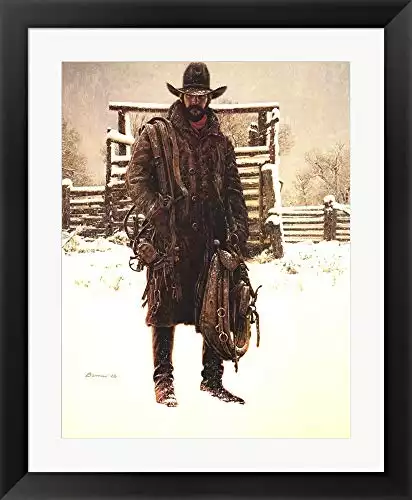
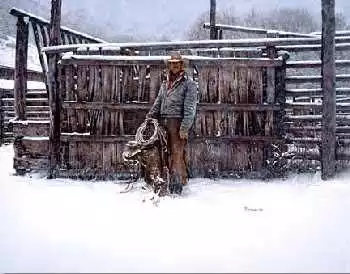
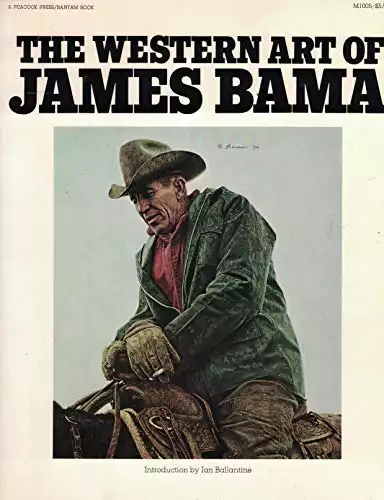
![James Bama, a Wyoming realist: [exhibition] : Coe Kerr Gallery](https://www.menspulpmags.com/wp-content/uploads/2024/01/51RQpO0BNrL._SL500_.webp)
